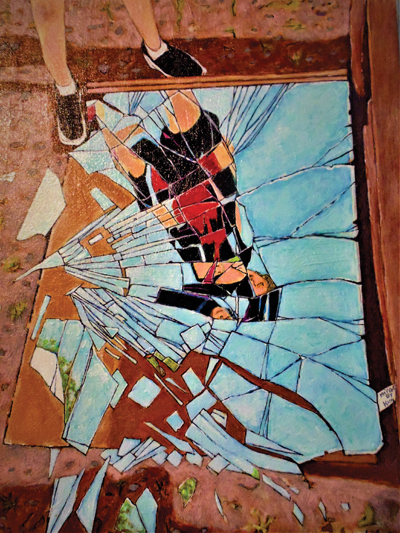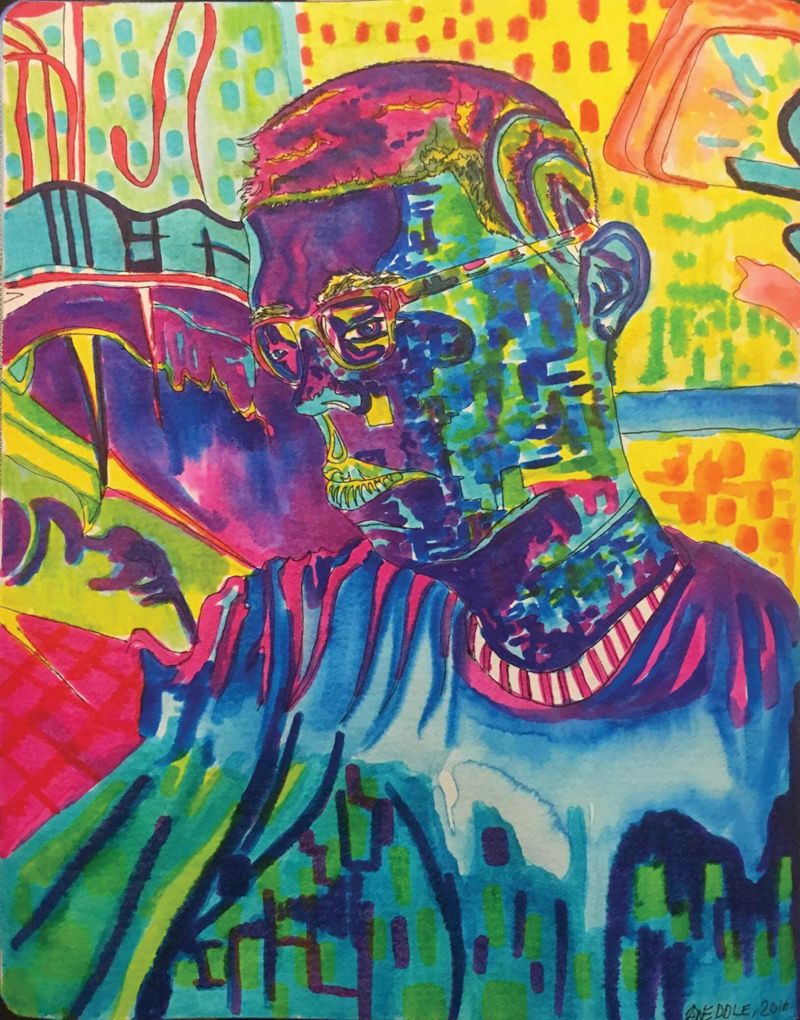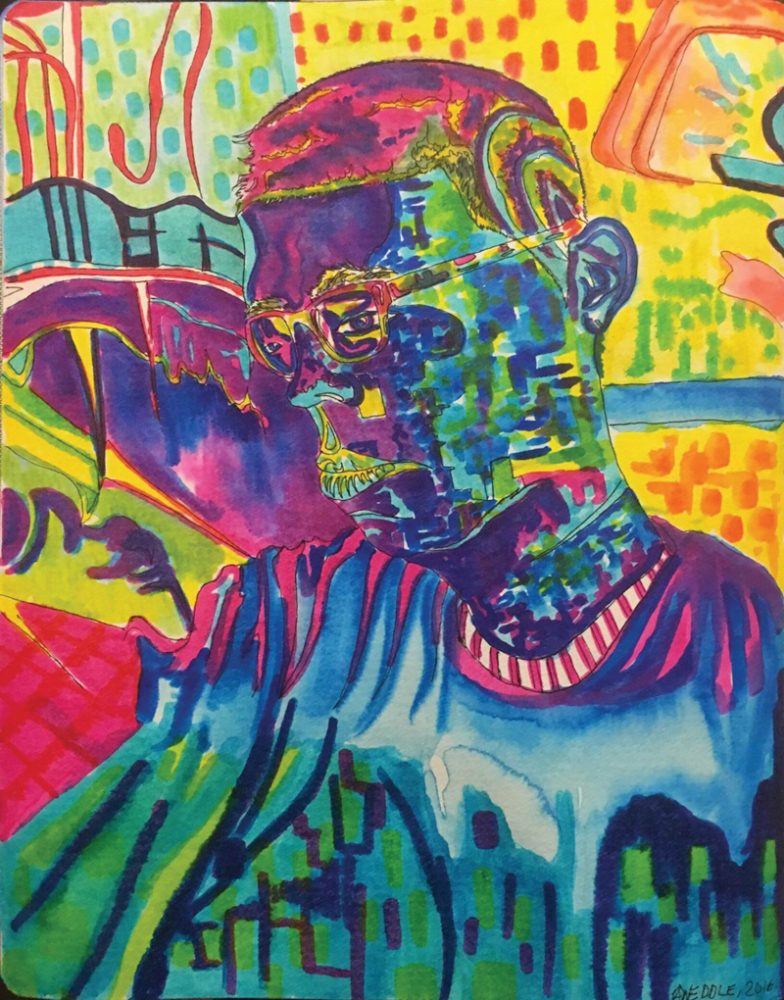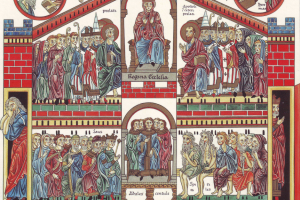Talk with parents of kids living with autism spectrum disorder (ASD) about finding a church home, and one ominous phrase often repeats: “A few years later, we tried again.”
Church-shopping to find a congregation that offers the right fit can be trying for any family. Yet for families with neurodiverse kids or youth—those whose minds are neurologically different, reflecting variation in the human genome—the first visit to a new church might be so traumatizing that a family doesn’t try again for years. Early childhood, that crucial season when children’s hearts are most open to the rhythms of liturgy and worship and new parents long for God and community, too often passes without the influence or support of the church.
Take Emma*, nonverbal at age 4. Emma’s mother brought her to childcare at church only to learn that Emma was refused by the caregiver, because she was not yet toilet trained. So she was sent to the nursery, where Emma’s mother dropped her off in a room of nearly two dozen infants and toddlers being cared for by five volunteers. Although Emma is easily overwhelmed by sensory stimuli, the caregivers assured her mother that Emma would be fine.
Twenty minutes into worship, however, her mother sensed that all was not well. She rushed to the nursery, only to find Emma frozen in the exact spot where she’d left her, her small face filled with fear. Emma’s mother spirited her away. Although church means a great deal to their family, the experience was so distressing that they did not walk through the doors of another church for years.
Emma and her mother are far from alone. One mother, Tonya, confesses, “I grew up going to church every day of the week—choir practice, youth group, and mission trips. I want my kids raised in that tradition, and I’m sorry we’ve missed out on that.” On their first visit to church, her son Luke struggled to regulate his sensory overload, and she feared his behavior would disrupt worship. They moved to another room in the church, then departed.
Years later, they made another attempt. This time, Luke clapped and sang along. She took him to Sunday school later and sat with him. “The other kids immediately knew he was different,” she says. “One boy had his mother’s cell phone and asked to take a picture of Luke. Well, he’s not a sideshow. The Sunday School teacher didn’t know how to respond.” They didn’t return. “I’m still very hopeful we will be able to go to church one day,” she adds wistfully.
Faith Inclusion Network Director Karen Jackson has her own story to tell. “My spouse was working, and one day I tried to take both kids to Mass. It was pouring rain, and once we entered the building, the music was too loud for our daughter. It set her off,” she says. They moved into an area where Jackson could hear but couldn’t see what was going on during the liturgy. So they eventually just left.
“I was so sad I couldn’t make church work; our family couldn’t do a normal thing,” she says. “My spouse and I took turns going to Mass, then five years later we tried again and found community.”
Another Catholic mother describes donning jeans and flat shoes for Mass in case she had to chase down her daughter. With a special needs son and a spouse who works weekends, she managed to remain in Mass for eight minutes before transitioning to the lobby, where she camped out for another 15 minutes. “At this point, we’ve given up—aside from Christmas Eve Mass, which I attend by myself,” she says. “Growing up, I went to Mass two or three times a week. I miss it. I feel lost.”

Kimberly Tucker, self portrait
A diminished body of Christ
For each family without a church home, the body of Christ is further diminished. “When this happens how can we say we have a Christian community around the eucharistic table?” asks Linda Snyder, cofounder of an alternate worship experience for those with ASD. “If they are not at the table, then we are not a whole body of Christ around the table.”
Indeed, with Mass attendance shrinking 6 percent in the past decade, according to Gallup, and the percentage of Americans who identify as Protestant in decline, the church cannot afford to fail at inclusion. A landmark study by the National Survey of Children’s Health found that the kids least likely to attend church are not those with physical or intellectual disabilities but those with ASD (who are almost twice as likely as neurotypical children to never attend church) or mental health conditions such as ADHD, depression, and anxiety.
From communication struggles, such as an inability to read social and emotional cues, to repetitive behaviors, sensory overload, and language challenges, autism can be a profoundly isolating condition in which the longing for human connection remains locked within.
Michael L. Ortiz describes his own autism as “unwittingly literal and eccentric . . . with marked proficiencies and severe deficits, formal and pedantic speech. The social instincts that develop organically in most people are in me replaced with artificially constructed rules applied with rigorous logic.” While others interpret his inexpressiveness as coldness, Ortiz likens the isolation of autism to living in a soundproof glass box, where one peers into a world in which relationships are simply inaccessible.
Perhaps then no one stands in need of the radical communion found at the table of Jesus Christ more than those living with autism (who struggle socially and relationally in nearly every arena of their lives) and the families who love them. The increasing reality of autism poses a challenging invitation to today’s church—how can we move beyond the status quo of traditional habits and an exclusive focus on content toward a relational model in which we honor the sacred worth of neurodiversity in the body of Christ?
A disabled God
The church embodies the inclusion of those living with neurodiversity, mental health conditions, and disabilities to the extent that it centers their voices, particularly those of children and youth. The late theologian Nancy Eiesland, who wrote provocatively about a disabled God, claimed, “Our bodies participate in the image of God, not in spite of our impairments and contingencies, but through them.” The Eucharist, she said, is “the remembrance of a broken body—and a celebration of the miraculous liberation that wells up from that broken body.”
When people with autism or disabilities are turned away from the table, purportedly for the inability to understand the significance of the sacrament or the more basic challenge of consuming the host, according to Eiesland, “the Eucharist becomes a dreaded and humiliating remembrance that in the church we are trespassers in an able-bodied dominion.”
Centering the voices, stories, and bodies of those living with neurological, mental, and developmental differences calls the church to radical hospitality. One mother explains, “Talk with the families [living with ASD] just as you would any other family: ‘Welcome, let’s talk one-on-one about what your family is seeking in a church, what needs you have, and how we can support your family.’ ”
Another agrees: “A little touch of support would mean so much. Reach out. Initiate contact. Help me connect to others.” Inquire, these families say, about the journey they have undergone to walk through the doors, receive their grief, honor their expressions of joy. Affirm their presence. Amplify their voices in a small group or educational setting, or even in worship, when someone is willing to share honestly about what it means to be a family with special needs.
Centering those on the margins necessarily provokes discomfort. In worship, neurodiverse children will spin and flap, speak or shout in ways often considered too loud or disruptive. Their walk up the aisle to celebrate the Eucharist may be long, circuitous, or belabored. They may fidget, echo phrases, or sing off-key.
Timoth Sylvia, pastor and adoptive foster father to children with special needs, insists this is all a glimpse of the kingdom of God. “The Spirit shows up in ways we may never understand, sometimes in the guttural sounds of these kids,” he says. “Children know how to worship. We need to learn from them and tap into their freedom and authenticity. We must get more comfortable with the disruption of the Spirit.”
Clergy and staff most effectively call a congregation to lean into discomfort when they model it themselves. Preaching or teaching about a moment when dawning truth broke through the strictures of the status quo, fashioning language for bulletins that alerts worshipers to the norms of a neurodiverse body of Christ, appointing a team to ask the difficult questions that ensure each event is accessible—all these actions illuminate the powerful truth that inclusion transforms the wider body.

Trent Altman, Breath of God
Our invisible disabilities
Henri Nouwen described the sacramental life while writing about his friend Adam, who was profoundly disabled. Nouwen served as Adam’s assistant at the L’Arche Daybreak Community in Ontario, Canada.
Of the core members at Daybreak, Nouwen wrote in Adam: God’s Beloved: “Yes, Adam, Rosie, and Michael couldn’t speak, but I spoke too much. Yes, Adam and Michael couldn’t walk, but I was running around as if life was one emergency after the other. Yes, John and Roy needed help in their daily tasks, but I, too, was constantly saying, ‘Help me, help me.’ And when I had the courage to look deeper, to face my emotional neediness, my inability to pray, my impatience and restlessness, my many anxieties and fears, the word ‘handicap’ started to have a whole new meaning.”
Through their simple life together, the priest befriended his own invisible disabilities, and even death itself. About Adam, he wrote, “His wonderful presence and his incredible worth enlighten[ed] us to comprehend that we, like him, are also precious, graced, and beloved children of God, whether we see ourselves as rich or poor, intelligent or disabled, good-looking or unattractive . . . in relationship with him we discover[ed] a deeper, truer identity.” This is true communion in the body of Christ.
In those living with differences and disabilities, we witness what Nouwen described as the incarnation of the great paradoxes of the gospel: “that the last will be first, that those who lose their lives will gain them, that the poor are blessed, and that the gentle will inherit the Kingdom.”
The exquisite gifts they bring—lessons about patience and forgiveness; immersive presence in the moment; overcoming challenges to be in community; empathy, willing hands, smiles that resonate deeply in the heart—such gifts enrich the body of Christ, beckoning us closer to God’s kingdom. “They embody honesty and sincerity,” Sylvia insists. “They exist free from societal boxes and so they are able to model unencumbered living.”
Belonging before believing
Such truths do not preclude the real need of kids and youth living with ASD for religious education and the spiritual formation of worship, including preparation for ritual milestones such as first communion and confirmation. The foundation for such learning, however, is the welcoming attitude of the congregation itself—inviting in with the radical hospitality of Christ, not simply the families themselves, but the transformation they provoke within the body of Christ. “Belonging comes before believing,” LeAnn Seto, creator of the alternate worship experience Parables, explains.
Parables offers a sensory-friendly, “no-shushing” worship experience in which the passing of the peace makes use of a ritual trading of colorful scarves (eye contact, handshakes, and hugs may be difficult for those on the spectrum), a therapy dog named Sasha rests on the steps of the altar always available for petting, and a visual schedule board details the order of worship (with Velcro backings; each aspect of worship is moved from one side of the board to the other after completion).
The call to worship and scripture readings are often read aloud by those with literacy challenges, the organ is played beautifully by a musician whose Parkinson’s disease makes it difficult for him to feed himself, and the offertory music consists of a sacred selection played on a recorder by a visually impaired woman who receives applause each week (she takes multiple bows). The scripture story is sometimes acted out spontaneously or with the help of props, and the sermon offers a rich theological treatment of the text for caregivers as well as those with disabilities.
The genuine joy and utter authenticity of the service appeals to Millennials and Gen Zers, who long for a relational experience rather than doctrine, according to Seto. “Every time I come, I get exactly what I need,” shared one 20-something caregiver who didn’t grow up attending church.
Alternate worship services such as Parables or Linda Snyder’s Rhythms of Grace (ROG) function as evangelical opportunities, special ministries, and incubator worship experiences focused on experimentation. Snyder calls such services “reverse inclusion,” centered around the needs and gifts of those on the spectrum but welcoming everyone.
Launched after a father of a child with ASD requested a worship experience in which his son could be himself, sites across the country now use the ROG model, with more springing up all the time. In Irvington, New York, Marcella, a 10-year-old girl with ASD, participated in ROG for the first time. Her grandmother sent a follow-up email to share that Marcella insisted on sleeping with the cut-out of Jesus calming the storm to ward off nightmares. At the dinner table she sang “Jesus Loves Me” and repeatedly made screeching noises, then extended her arm and proclaimed, “Calm!” The profound meaning of the service had touched her life in places of deepest anxiety.

Angela Weddle, self portrait
Practical changes for congregations
Not every congregation will provide an alternate worship experience, but today’s churches are called to ask what is possible in their context.
Newman UCC in Rhode Island offers space to a local nonprofit organization serving families with ASD. Together, they created a sensory room with low lighting, yoga balls, weighted blankets, buckets of fidget spinners, and a volunteer ready to receive any child, youth, or adult who becomes overstimulated in worship.
Karen Jackson’s parish gathered a small group for conversation around the book she wrote about her daughter, Loving Samantha. Other churches train volunteers to provide one-to-one accompaniment to children or youth with ASD in various ministry settings and at church events. Some partner with other local churches to provide a Parents’ Night Out for families with special needs, a respite experience essential to parents as primary caregivers.
Resources to accommodate such practices abound. Faith Inclusion Network provides a resource page filled with books, congregational assessments on accessibility, forms for Individualized Education Program plans for kids/youth with ASD that emphasize spiritual formation, and adaptive sacramental kits for first communion and confirmation. The Archdiocese of Newark offers My Mass picture books that help young children understand and anticipate the order of worship.
The National Catholic Partnership on Disability (NCPD) website includes a free video series that encourages families to practice the Eucharist at home, a menu of choices for worshiping families with ASD (a sensory or quiet room, a walk through the church, worshiping next to a support person). They encourage worship leaders to employ prompts—verbal, textual (in bulletins), and with gestures—to aid those who struggle with transitions. NCPD also recommends that all churches observe Autism Awareness month in April through petitions during prayers of the people, a bulletin insert, or a special testimony.
Linda Snyder recommends a simple insert with the order of worship to check off as liturgy proceeds, making accessible a bucket of fidgets for kids/youth to bring into worship, or even making soundproof headphones available, especially for newcomers. She urges church staff to offer on the front page of their website (which families with ASD typically visit before setting foot through the doors of the church) a walkthrough of the building. When a family requests a walkthrough, she advises, it should end with a personal conversation about the family’s particular gifts and needs.
Neurodiversity as a sacred gift
With what Ortiz describes as an unwitting literalism and “focus on details to an extent that precludes comprehension of the whole,” kids and youth with ASD each make a unique journey through spiritual development. Ortiz explains, “As an adolescent I was unable to believe in God, for the people around me spoke of God in complacent generalities, whereas I could comprehend only concrete particulars.”
For youth like Ortiz, the body of Christ becomes the embodiment of God, the real expression of divine love, particularly as they participate in the ritual milestones of faith with their peers. For children like Marcella, one story, phrase, song, or verse of scripture will attend them in their most troubled moments as a taste of God’s amazing grace. And yet, if the church’s grasp of neurodiverse faith ends there, we have missed the more dynamic truth each family with ASD brings through our doors. As Nouwen insisted, our preoccupation with whether a particular child or youth can pray, participate in sacraments, or comprehend doctrine are “questions from below.”
“God’s questions,” Nouwen said, “the questions from above,” pointedly ask if we can allow those with disabilities and differences to lead us into prayer. Can we allow them to be a living prayer at Christ’s table? In their faces, do we behold the very incarnation of love? To make whole the body of Christ, we must awaken to the beautiful eccentricities, holy disruptions, and abundant gifts that walk among us in the voices, stories, and bodies of the neurodiverse.
All images courtesy of The Art of Autism, a nonprofit organization that empowers and connects individuals within the autism community through participation in the arts. Top image: Amrit Khurana, womb.
*Some names have been changed to protect the privacy of families and children.
This article also appears in the March 2019 issue of U.S. Catholic (Vol. 84, No. 3, pages 33–37).













Add comment